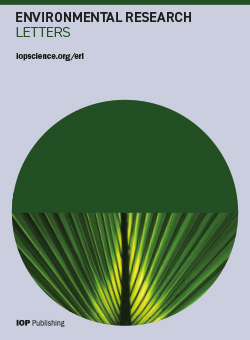The forest loss within small reservoirs surpasses that of large reservoirs across the tropics
IF 5.8
2区 环境科学与生态学
Q1 ENVIRONMENTAL SCIENCES
引用次数: 0
Abstract
The vast potential of hydropower remains crucial in addressing the escalating need for clean energy, particularly in Tropical Moist Forests (TMFs) regions. Yet, the widespread construction of reservoirs within TMFs has resulted in the inundation of forested areas, exacerbating the fragmentation of forest landscapes and contributing additional loss of carbon stored in these ecosystems. Despite this, the scale and degree of forest loss within reservoirs due to inundation from reservoir construction remain poorly quantified and mapped across tropical regions. Here, we leverage long-term TMFs data spanning from 1990 to 2021 to investigate forest loss within reservoirs across tropical regions. We reveal that forest losses within reservoirs total 3521 km2, constituting a relatively small fraction of total forest loss. Nonetheless, the spatial distribution of forest loss within reservoirs varies significantly across the tropics, with patchy distributions observed in the American and African TMFs, and striped patterns evident in the Asian TMFs. Contrary to common assumptions, we show that small reservoirs exhibit higher levels of forest loss compared to large reservoirs, particularly pronounced in the African TMFs region. Furthermore, our projections indicate that the exclusive construction of small reservoirs contributes to approximately 27% of Africa’s total forest area lost. We underscore the importance of policymakers carefully evaluating the trade-offs associated with the construction of large versus small reservoirs in TMF regions, to minimize the adverse impacts of hydropower development on forest ecosystems.在整个热带地区,小型水库的森林损失超过了大型水库
水力发电的巨大潜力对于满足日益增长的清洁能源需求仍然至关重要,尤其是在热带潮湿森林(TMFs)地区。然而,在热带潮湿森林(TMFs)地区广泛建造水库已导致森林地区被淹没,加剧了森林景观的破碎化,并造成这些生态系统中储存的碳的额外损失。尽管如此,在整个热带地区,因水库建设造成的淹没而导致的水库内森林损失的规模和程度仍然很少被量化和绘制。在这里,我们利用从 1990 年到 2021 年的长期 TMFs 数据来调查热带地区水库内的森林损失情况。我们发现,水库内的森林损失总面积为 3521 平方公里,仅占森林总损失的一小部分。然而,水库内森林损失的空间分布在热带地区差异很大,在美洲和非洲 TMF 观察到的是斑块分布,而在亚洲 TMF 则是明显的条状分布。与通常的假设相反,我们发现小型水库的森林损失程度高于大型水库,这在非洲 TMF 地区尤为明显。此外,我们的预测表明,仅修建小型水库就造成了非洲森林总面积约 27% 的损失。我们强调,政策制定者必须仔细评估在屯垦框架地区建造大型水库与小型水库之间的权衡,以尽量减少水电开发对森林生态系统的不利影响。
本文章由计算机程序翻译,如有差异,请以英文原文为准。
求助全文
约1分钟内获得全文
求助全文
来源期刊

Environmental Research Letters
环境科学-环境科学
CiteScore
11.90
自引率
4.50%
发文量
763
审稿时长
4.3 months
期刊介绍:
Environmental Research Letters (ERL) is a high-impact, open-access journal intended to be the meeting place of the research and policy communities concerned with environmental change and management.
The journal''s coverage reflects the increasingly interdisciplinary nature of environmental science, recognizing the wide-ranging contributions to the development of methods, tools and evaluation strategies relevant to the field. Submissions from across all components of the Earth system, i.e. land, atmosphere, cryosphere, biosphere and hydrosphere, and exchanges between these components are welcome.
 求助内容:
求助内容: 应助结果提醒方式:
应助结果提醒方式:


